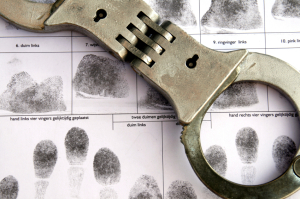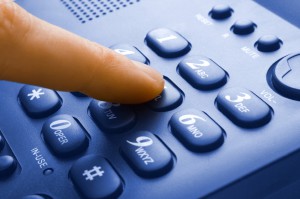It’s Law Enforcement Biometric Month here at FindBiometrics and to celebrate the vertical that aims to keep us safe on the streets and in our homes we’re going to take a look at the diversity in its solutions.
Fingerprints
 Fingerprints are so tied to law enforcement that the two ideas are practically synonymous in the minds of the public. The link is so strong for many that when fingerprint biometrics started to become a mainstream consumer technology thanks to new smartphone innovations, many were stricken with technopanic
Fingerprints are so tied to law enforcement that the two ideas are practically synonymous in the minds of the public. The link is so strong for many that when fingerprint biometrics started to become a mainstream consumer technology thanks to new smartphone innovations, many were stricken with technopanic
Indeed, the very first use of mobile fingerprint biometrics was in service of justice. In 1995 Digital Biometrics was commissioned by Harris Corporation to develop a mobile device called the Squad Car Identification Device. The history of the fingerprint and law enforcement goes further back than that, however, with Arthur Conan Doyle even having Sherlock Holmes use prints as forensic evidence in The Adventure of the Norwood Builder, which was published in 1903 and is set a decade earlier.
Nowadays fingerprints still play a prominent role in law enforcement. Mobile identity verifying technologies can match the prints of persons encountered in the field with law enforcement databases allowing officers the ability to stay out and on the job rather than having to bring suspects back to the station.
Fingerprints also make up a huge part of the FBI’s now fully operational Next Generation Identification system. When the hard copy criminal files were being transferred over into the digital database, approximately 83 million fingerprint cards had to make the jump from real life to data.
Palmprints
 The tips of our fingers aren’t the only unique features splayed out over our hands: our identity is also written on the surface of our palms. That’s why Next Generation Identity program also supports latent palmprint and supplemental print matching capabilities thanks to the National Palm Print System.
The tips of our fingers aren’t the only unique features splayed out over our hands: our identity is also written on the surface of our palms. That’s why Next Generation Identity program also supports latent palmprint and supplemental print matching capabilities thanks to the National Palm Print System.
Initially rolled out in 2013, the National Pal Print System expands the options forensics experts have in trying to match prints to wanted persons. Prior to the Palm Print System, NGI only provided immediate access to finger and thumb prints. The FBI has already received a match on a latent palm print, going to show that this functionality is a welcome addition.
Face
 Imagine a wanted poster from an old Western. What is the most prominent use of space on the pin-up bill? The criminal’s face. In modern cop movies, when a perp is brought in to the station and booked, what to they take a picture of? The criminal’s face. The fact of the matter is, when it comes to identifying anyone, humans rely on facial recognition first.
Imagine a wanted poster from an old Western. What is the most prominent use of space on the pin-up bill? The criminal’s face. In modern cop movies, when a perp is brought in to the station and booked, what to they take a picture of? The criminal’s face. The fact of the matter is, when it comes to identifying anyone, humans rely on facial recognition first.
Long distance and unintrusive, facial recognition can be used to match real life people against photos in law enforcement databases. With NGI’s latest update facial recognition is playing an even bigger role in law enforcement these days. The Interstate Photo Serve (IPS) uses facial recognition technology to match persons with images from a database of mugshots and other criminal photos.
Facial recognition is also getting more powerful thanks to innovations in rich data analytics. A new Software-as-a-Service solution from Tygart Technology called MXSERVER can process text, video and photo data, grouping and extracting relevant segments depicting people of interest. Similarly, a police department in the UK is using NEC’s NeoFace technology to identify faces of wanted persons in CCTV and body cam footage.
Voice
 Voiceprint biometrics are booming in the world of finance and call center operations thanks to their passive nature and the convenience they bring to phone transactions. In the world of law enforcement however they can help keep track of who prison and jail inmates are talking to.
Voiceprint biometrics are booming in the world of finance and call center operations thanks to their passive nature and the convenience they bring to phone transactions. In the world of law enforcement however they can help keep track of who prison and jail inmates are talking to.
This past June, Securus Technologies announced its acquisition of JLG Technologies, a company specializing in continuous voice biometrics. JLG’s voice biometric technology will be helping correctional facilities monitor the communication lines, passively running in the background of calls identifying both the caller and the recipient, flagging unauthorized communicators.
Voiceprints also have a place in forensics. With the growing use of voiceprints around the globe and the proliferation of audio and video based media, it is becoming easier than ever to identify anyone based on the biological characteristics of their voice.
*
Stay posted to FindBiometrics next week as we bring Law Enforcement Biometrics Month to a close. Has something to add to the discussion? Follow us on Twitter and tweet at us using the hashtag #FBLawEnforcement to be a part of the conversation.
—
October 15, 2014 – by Peter B. Counter


Follow Us